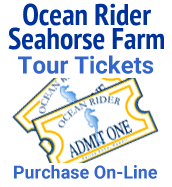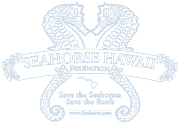- This topic has 2 replies, 2 voices, and was last updated 16 years, 6 months ago by c.horse.
-
AuthorPosts
-
January 11, 2008 at 2:06 pm #1331c.horseMember
Hello, I wonder if you could help me with flow, as you will be able to tell I\’m new to this. I want to have a 130l tank with a hang on refugium a 3 stage filter and a protein skimmer, what I need to know is what size pumps to get. Can you use any size pump with any product, for example some protein skimmers I see say works best with 2400lph pump (which is obviously too high). Also do you know what HOT skimmers are best to buy in UK? I\’m really confused about how much flow to have, I mean if I have 3 pumps that are 400lph each thats still to much flow isn\’t it? Will the equipment still work as well with lower powered pumps?
I\’m sorry for rambling, I hope someone understands what I mean:unsure:
Thank you.January 12, 2008 at 3:18 am #3939Pete GiwojnaGuestDear C. horse:
I don’t know much about the type of pumps and equipment that are available in the UK, but I would be happy to share my thoughts with you on the appropriate water flow for your aquarium. In general, I would say that the filtration system for seahorse tank should turn over the entire volume of your tank a MINIMUM of five times per hour. It’s difficult to quantify the water flow beyond that because the optimal flow depends to some extent on the dimensions of the aquarium, particularly the height, and largely upon what type of water return the filtration system uses. For example, if the filtration system features a waterfall return or a spray bar return positioned above the surface of the water to provide better surface agitation and oxygenation, both of which effectively diffuse the discharge from the filter, you can easily use a water pump that turns over the entire volume of the tank 10 times per hour (or even 20 times per hour in sufficiently tall tanks) without generating too much turbulence or water flow for seahorses. (Heck, Jorge Gomezjurado insists on turnover rates of over three times the volume of the aquarium even for the delicate seadragons which suspended in the water column and lack prehensile tails altogether. The ability of seahorses to anchor themselves to objects with their tails allows them to tolerate much more current than the dragons.)
This is what I usually advise hobbyists regarding the water flow for seahorse systems:
Water Circulation
Time and time again I find that home hobby tanks have far too little water movement. In my experience, most seahorse setups are chronically undercirculated, a serious mistake for small, closed-systems aquaria, and our pampered pets often suffer as a result. Many hobbyists are overly conscious of the seahorse’s inactive life style and limited swimming ability, and have adjusted their flow rates accordingly, resulting in less water movement than desirable. In actuality, seahorses prefer moderate water movement, including some areas of brisk current, providing there are also sheltered spots and some areas of relatively slack water they can move to when desired. Slack water means comparatively low flow, NOT stagnant conditions! Avoid dead spots and stagnant areas at all costs.
I have often discussed this matter with professional divers and collectors who regularly encounter seahorses in the ocean, and they report that the horses are often found where you would least expect them — well offshore and thriving in areas with powerful currents. For example, here is how Paul Baldassano, a commercial diver in New York who makes his living collecting sea urchins, describes the behavior of his local seahorses:
"In regard to seahorses in the wild, I occasionally see Hippocampus erectus in the wild while SCUBA diving but never in the places where they are supposed to be. I see them in the open sea far from shore and also in areas with large rocks and very strong currents. The last one I saw was in a channel off the south shore of Long Island New York in water about 12 feet deep. The current was so strong that I had to hold on to the rocks so as not to be swept away. This Hippocampus erectus was having no trouble staying there munching on the abundant plankton. Apparently they find places near the rocks where there is no current because as you know they are lousy swimmers. There is also a large population of seahorses in a similar area in another part of the New York shore, but I think it is best not to divulge that location for obvious reasons (Baldassano, pers. com.)."
Neil Garrick-Maidment, a very successful seahorse breeder in the UK, reports much the same thing:
"Whenever I have dived on Seahorse sites I have always been amazed by the currents and tides that this very fragile looking Seahorse lives in. We often find Seahorses in flat muddy/silt areas nowhere near rocks or weed. These areas are often scoured by strong currents and the Seahorses do well in them and seem completely unperturbed by the current. In setting up a tank for them I try to remember the feeling I had in those areas and replicate them. (Garrick-Maidment, Jun. 2002)."
Likewise, David Warland, a fish farmer and commercial seahorse breeder in Port Lincoln, Australia, reports he often finds Hippocampus abdominalis perching on the tuna net enclosures at the farm in deep water:
"The Horses that are around the farms have traveled vast distances over plain sand/mud to get to the farms, which are in at least 20 meters of water, and are miles from the nearest land or shallow water (Warland, pers. com.)."
And Jorge Gomezjurado, the Senior Aquarist at the National Aquarium in Baltimore, recommends the following when it comes to water movement:
"I personally believe that current and water dynamics are very important for Syngnathids. In nature they live in areas with active water movement.(i.e., tides in mangrove lagoons and estuaries, coral reefs, kelp forests, etc.). Why don’t give them the same environmental conditions in captivity? Our small tanks (90 gallons) also have large turnovers on an average of 5 gpm (or 300 gph). It is very important that the current is steady and directional constant, which allows the animals to find a good spot to hold and they will not be pulling in different directions all the time."
The point is that, as long as slack-water retreats are available, the greater seahorses can tolerate far more current than most folks suspect and good circulation is as important for a seahorse setup as any other aquarium. I cannot emphasize that enough.
For example, in addition to an external power filter, my SHOWLR system also has a 200 gph powerhead with a sponge pre-filter positioned right near the top for surface agitation and extra water movement, with additional small powerheads used as needed to eliminate any dead spots along the substrate or behind the rockwork. I like to give my seahorses as much current as they can handle without getting blown around.
In short, if your filtration is not turning over the entire volume of the aquarium a MINIMUM of 5 times per hour, your seahorse setup is undercirculated. With a spray bar return raised above the surface of the water to diffuse the outflow, you can often achieve turnover rates of up to 10-20 times the volume of your tank every hour without producing too much turbulence or current for seahorses. A waterfall return is another good way to diffuse the output from your filter, and also works well for seahorses. There will be an area of relatively vigorous water movement at one end of the aquarium underneath and nearby the waterfall, while the other end of the tank is a relatively low flow area.
But as with anything, too much of even a good thing can be undesirable, and too much current can overwhelm the limited swimming ability of Hippocampus. One indication that you may have too much water movement in your seahorse tank is if the seahorses are getting buffeted around by the currents, and whisked away uncontrollably when they tire of fighting the current. Or alternatively, they may stay perched in one place all the time and refuse to swim around and explore their tank for fear of getting swept away by the current if they relax their grip on their hitching posts. So you can get a pretty good gauge of how well the seahorses are able to cope with the water movement than their tank by observing how the current affects the swimming ability.
Likewise, if a mated pair of seahorses is consistently spilling eggs during the copulatory rise, that’s another pretty good indication that there may be too much turbulence or water movement in the upper reaches of their aquarium.
If the seahorses are having difficulty tracking their prey and eating because the current whisks the frozen Mysis past them too quickly to target it accurately and slurp it up, that’s another red flag. Often that situation can be corrected simply by adjusting the output from your filter to reduce the current during feeding time or turning it off altogether while a seahorses are eating.
But as long as your seahorses aren’t getting buffeted around, aren’t routinely dropping eggs during disrupted mating attempts, and aren’t having difficulty targeting their prey and eating, there’s really no such thing as too much water movement. In general, the stronger the the water flow, the more important it is to keep the water currents steady and unvarying so the seahorses can establish holding areas in the sheltered spots and low-flow zones downcurrent without getting blindsided by unpredictable currents. Just make sure your seahorses are not getting trapped against overflows and be sure to screen off the intakes for any powerheads. Powerheads can be switched off at feeding time, if necessary.
In order for a protein skimmer to function with optimal efficiency, it’s important to mate the proper pump with a particular protein skimmer. Otherwise the protein skimmer may not be able to generate an adequate bubble column to facilitate foam fractionation. If you would like to know which of the HOT protein skimmers would be best suited for a 130 L aquarium, and which pump that is available in the UK would be appropriate for that proteen skimmer, I would be happy to which you in contact with a couple of very successful seahorse breeders and the UK who could advise you in that regard. Just contact me off list ([email protected]) and I will provide you with their contact information.
Best wishes with all your fishes, c. horse!
Happy Trails!
Pete GiwojnaJanuary 12, 2008 at 7:49 pm #3940c.horseGuestThank you so much for your reply, it is extremely helpful!
c.horse x
(I have sent you an e-mail) -
AuthorPosts
- You must be logged in to reply to this topic.





